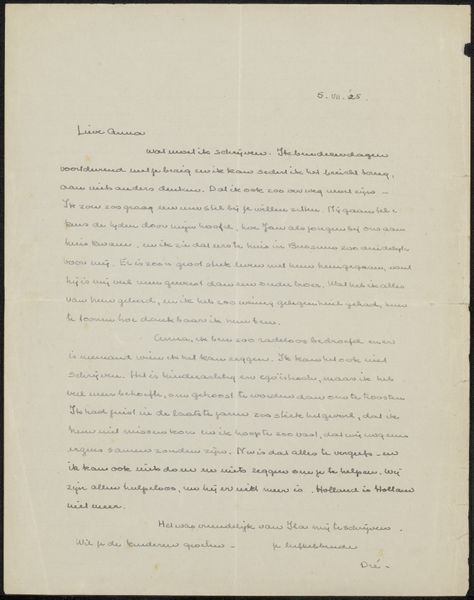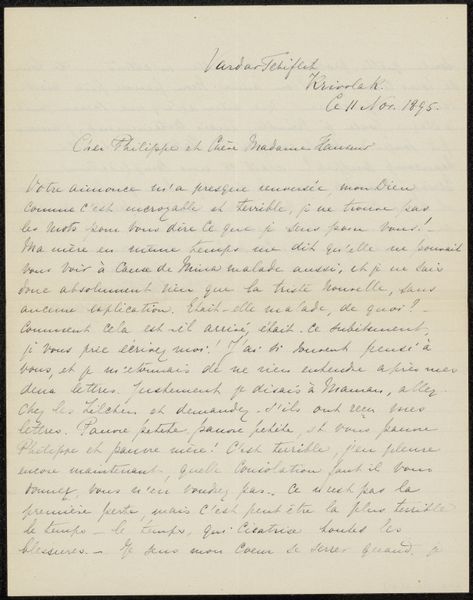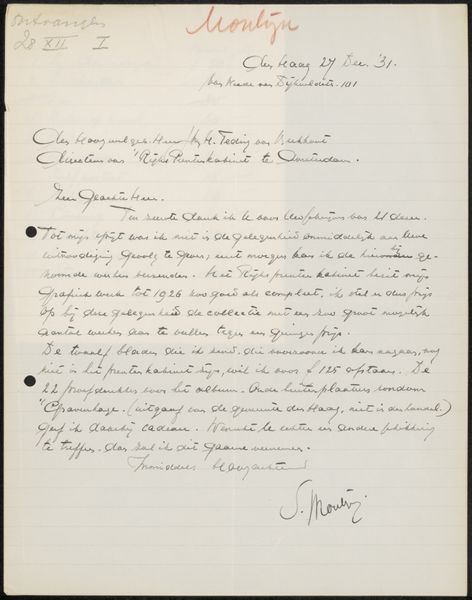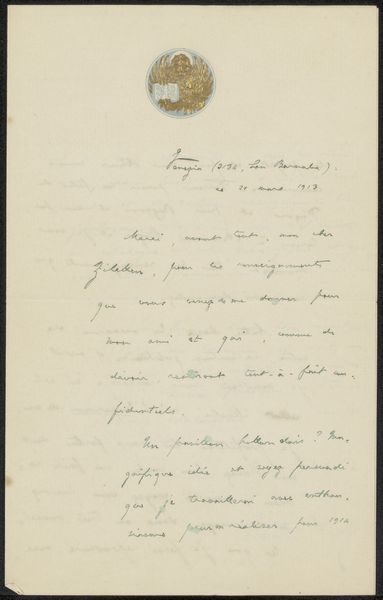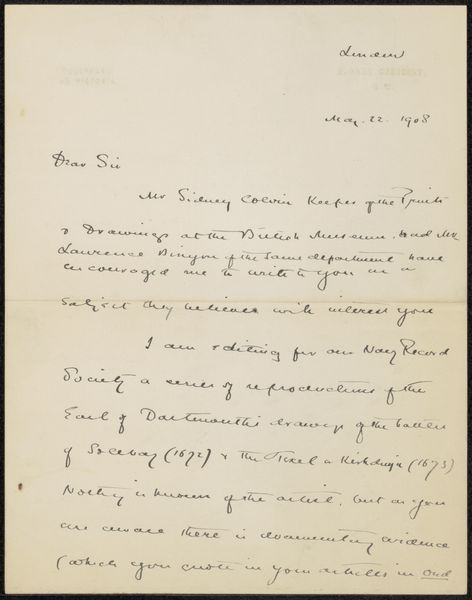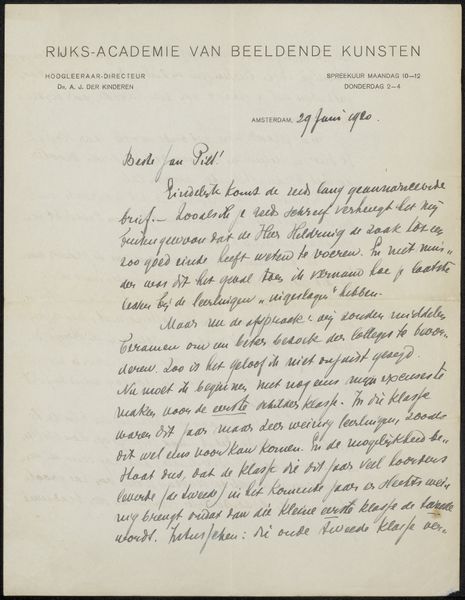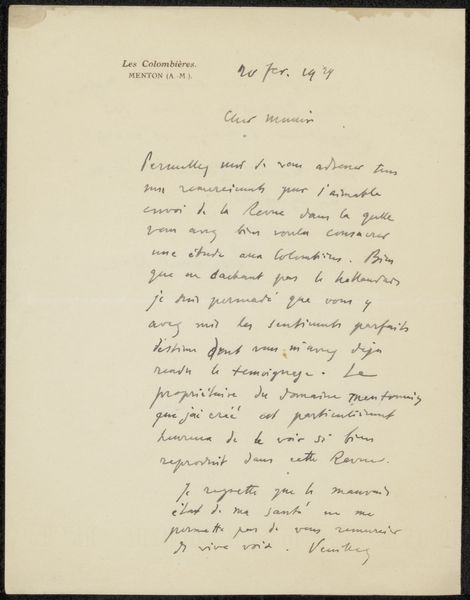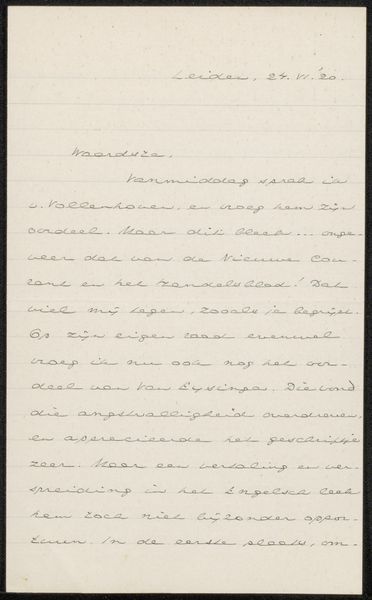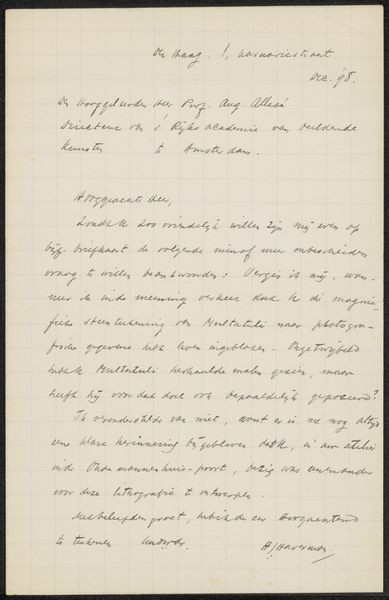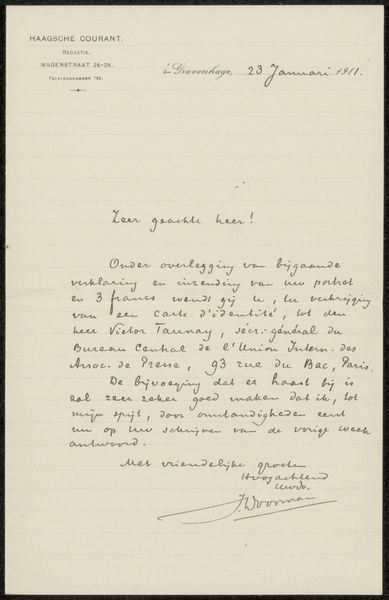
drawing, paper, ink
#
drawing
#
paper
#
ink
#
hand-written
Copyright: Rijks Museum: Open Domain
Curator: Here we have "Brief aan Jan Veth," likely from between 1924 and 1930, an ink drawing on paper by André Jolles. It’s…a letter. What strikes you about it? Editor: Well, I am drawn to how intimate this feels – like uncovering a private correspondence. I can’t read Dutch, but it definitely evokes a sense of a specific time and place, even a personality, due to the handwriting. What can you tell me about how this work relates to its cultural moment? Curator: Consider how the act of writing itself carries weight here. In a time before ubiquitous electronic communication, a handwritten letter held a different social value. It represents a deliberate act of communication, a physical manifestation of thought and relationship. What statements, perhaps about status or intent, do you believe this physicality suggests about both Jolles and Jan Veth? Editor: It shows a clear level of respect between these two people, given that the message has a time stamp and specific street information as a heading. It feels far more personal than what an email might be perceived as in this era. The "time stamp" of that heading serves as a type of certification. I do find myself wondering about the relationship between art and handwriting, and also its audience given its medium, compared to, say, a drawing intended for display in a gallery. Curator: Good question. The act of handwriting brings immediacy that moves beyond language; letter-writing becomes intertwined with social and institutional forces when collected by museums or considered historical documents. Handwriting, especially its legibility, became particularly charged during the period in which "Brief aan Jan Veth" was produced. This illegibility also affects its availability for a future audience and scholars to decipher. Given all of these, does our current venue – an audio tour about a museum holding an old letter – feel appropriate in considering its context? Editor: Yes, because it has brought these elements to light that might otherwise go unseen. Considering it this way really underscores the choices that any institution like this has to make when presenting work and making it accessible to people today. Curator: Indeed! By exploring its journey from private communication to public display, we can better appreciate the complexities of André Jolles’s work.
Comments
No comments
Be the first to comment and join the conversation on the ultimate creative platform.

